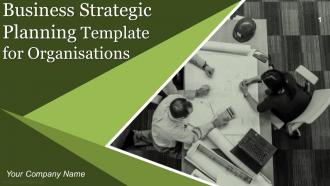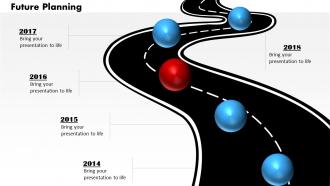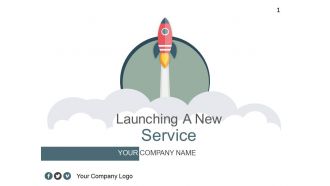Technology assessment is a vital part of business processes around the world. The term Technology Assessment (TA), per se, originated in the 1960s when US aerospace agencies developed supersonic transportation technology.
What is Technology Assessment Process?
Technology assessment (TA) is the study of the impact that a potential, under-development technology or the application of an already existing technology can make on society, its development path, and the environment. It includes opinions of the scientific community, political leaders, and regulatory authorities. TA is not meant to be a tool to scuttle the adoption of technology; it does, however, keep a watch on its unethical use and the impact of technology commercialization.
In management, TA is a form of cost-benefit analysis (CBA) that businesses use for new technology (product or service) in the market. As part of the methodology, organizations assess technology in a way that, based on the status quo, will they be able to get the desired outcomes (profit, use, popularity, etc.). Another key question that needs to be answered is whether the current development process is beneficial (minimum cost, brand image).
Benefits of Technology Assessment
Technology assessment (in business) is a long-term and time-consuming process, but it is worth attempting due to the associated benefits, as outlined below:
- Help determine how sound and beneficial an investment, decision, product, or service is compared to the technology’s cost.
- Finding and comparing alternative methods/ways to introduce a piece of technology
- Gathering information/public opinion/authorities/stakeholders pre-approval and their stand on the new technology.
- An opportunity to create countermeasures for unethical use of technology.
TA is an inter-disciplinary and complex approach to follow. It does not just end with finding the right ways to introduce technology. It goes way beyond this to understand consequences, risks, effects, opportunities, and development strategies.
Develop strategies and achieve the product vision with help of this guide, flushed with technology roadmap templates to help IT professionals.
Templates To Make Technology Assessment Process Easy
A lot to process and (if not impossible) challenging to present and make others understand. Right? It is not easy to pen down this vast strategy. To help, we offer our tailor-made and agile technology assessment templates for businesses in Information Technology (IT) and other businesses. You will be able to present these technology assessment methods and reports with these easy-to-understand designs.
Let's check these out!
Template 1: IT Simplification Assessment PowerPoint Presentation Slide
Eliminate technical difficulties and evaluate business technologies using this IT Simplification assessment design. This PPT layout comprises an IT simplification roadmap, levers of IT, components of IT complexity, approaches to reduce complexity, etc. You will use this design to present the causes of complex operations such as the continued use of legacy systems, disparate standards, etc. Get it now!
Template 2: Solution Assessment Technology PowerPoint Template
Brainstorm and discuss new solutions with your team using this solution assessment PPT design. It will help you evaluate options, check the scope of the solution with drivers and enablers, technical solution assessment, deployment, etc. Use this assessment presentation deck to present a roadmap for solution technology implementation. Grab it now!
Template 3: Information Technology Infrastructure Assessment Plan
Use this IT infrastructure PowerPoint template to prepare an assessment plan of the organization. It will help you discuss multiple infrastructures based on usability, the latest version, and systemization. You will use this PPT design to discuss CRM applications, data servers, operating systems, and personal computers. Download it now!
Template 4: Information Security Assessment Matrix PowerPoint Template
Deploy this security assessment matrix design to run an assessment of information and data protection. This PowerPoint Template is designed to help you assess of the security of your systems. It provides a comprehensive overview of security threats, vulnerabilities, and controls, allowing you to rate each risk and management. It will help you discuss cyber threats for mobile/web applications, POS and UPIs, HVAC/BMS, WiFi, and more. Get it now!
Template 5: Technology Assessment Phases And Activities PPT Slide
You need to assess new technologies in a quick and efficient manner to ensure your business stays up to date. This PowerPoint template will provide a clear and concise overview of the phases and activities involved in assessing new technologies. It will help you discuss technology evaluation, defining prototypes, plan prioritization, etc. Download it now!
Template 6: Technology Assessment Department PowerPoint Template
Deploy this assessment PPT graphic to help your IT department present the old and new ratings for technology along with its testing results of multiple attributes. Grab it now! The unique color coding of this template will help the audience easily understand the technology rating. Use this presentation layout to draw comparisons in ratings and show the development of technology over a period.
Template 7: Four Phases of Technology Assessment PPT Slide
This PPT Slide is an essential tool for businesses or organizations wanting to keep track of their technology assessment process. Use this design to divide the technology assessment into four phases — evaluate, define, plan, and execute. It will allow you to split these steps into small, manageable steps too. Grab it now!
Template 8: Technology Assessment Matrix With Impact PowerPoint Template
Consider the impact of technology on business with our technology assessment matrix PPT infographic. This template will help you evaluate technology's positive and negative effects on parameters like mobility, energy efficiency, quality of life, etc. It will help you test the result versions of technology and compare their success. Get it now!
Template 9: Architecture Design of Technology Assessment PPT Slide
Employ this technology assessment PowerPoint graphic to add value to your business evaluation presentation. It will help you present IT strategy, process & governance, shared service model, and application review topics. Our easy-to-use interface and customizability options make it perfect. Grab it now!
Template 10: Six-steps in Technology Assessment PowerPoint Slide
Are you looking for a comprehensive way to assess the potential of new technologies? This six-step process is designed to help you evaluate a technology's feasibility, commercial viability, and potential impact. It will help you discuss steps — situation analysis, document review, risk identification, vulnerability scan, data analysis, and report & briefing — of technology assessment. Download it now!
Technology assessment is essential for infotech businesses to make informed investment decisions and reap the benefits of new technologies.
The templates provided above are for download and will help you conduct a technology assessment in an effortless manner. Be sure to check back soon for more informative blog posts from our team.
P.S. Want to know how to make beneficial investments and grow your business with impactful decisions? Then don’t miss this guide on impact assessment and more templates to download.
Frequently Asked Questions (FAQs)
1. What is the technology assessment process?
Technology assessment is called to evaluate new technology and related department(s) like IT, research, and development to understand their current functionality and improve performance. This analysis will help determine strengths, weaknesses, improvement opportunities (limitations), and capabilities.
2. Why is technology assessment important?
Technology assessment (TA) has become crucial for every industry's new technology development and launch. TA is important to understand the full spectrum of technology applications. It helps gather customer reviews on technology and plan strategies for improving it.
3. What are the various elements in technology assessment?
3 Major elements of Technology Assessment (TA) are:
1.Methods: Choose a suitable TA method based on your analysis requirements. Few methods are — risk analysis, impact analysis, checklists, scenario construction, market studies, etc.
2. Keep records: Whenever conducting an assessment, it is vital to record the process, analysis, and results. In the future, it will be easy to compare the results without conducting the same assessment again.
3. Variability: Conduct multiple assessments with variations of environment, audience, equipment, and other factors which can affect the use of technology. It is important to check the precision and accuracy of the assessment.
4. Interviews: We should not ignore the power of public opinion. Interview as many users as possible from different demographics of the targeted audience.
5. Conclusion: A documented technology assessment must include the conclusion of the TA. It should be included in the TA after a comprehensive review of the assessment committee.
4. What are the reasons for conducting a technology assessment?
Assessments must convey information that is useful and easy to understand. Good reasons for conducting a formal technology assessment (TA) are:
- Find out that the technology being used is appropriate.
- Evaluate that technology is being used in an ethically correct manner.
- Determine if there is a requirement for new technology or to upgrade the existing one.
5. What is the first thing to do in technology assessment?
The first thing to do when starting a technology assessment is to — discover. To reach a solution, you first need to understand the status of existing technology, what problems you are trying to resolve with that technology, and what solution you are looking for. Also, discover the process you will adapt to combine existing technologies with new technology.
6. What are the five steps in technology assessment?
The process of technology assessment can be divided into five major steps:
- Discover the reason for the assessment.
- Research existing relevant technology and gather information, ideas, and solutions.
- Make a roadmap. Figure out the requirements - tools, information, resources, etc.
- Development of new technologies/solutions.
- Testing phase.
- Evaluate and improve based on test results.
- Re-test for improvement and perfection.
- Make it available for (Public) use.





 Customer Reviews
Customer Reviews



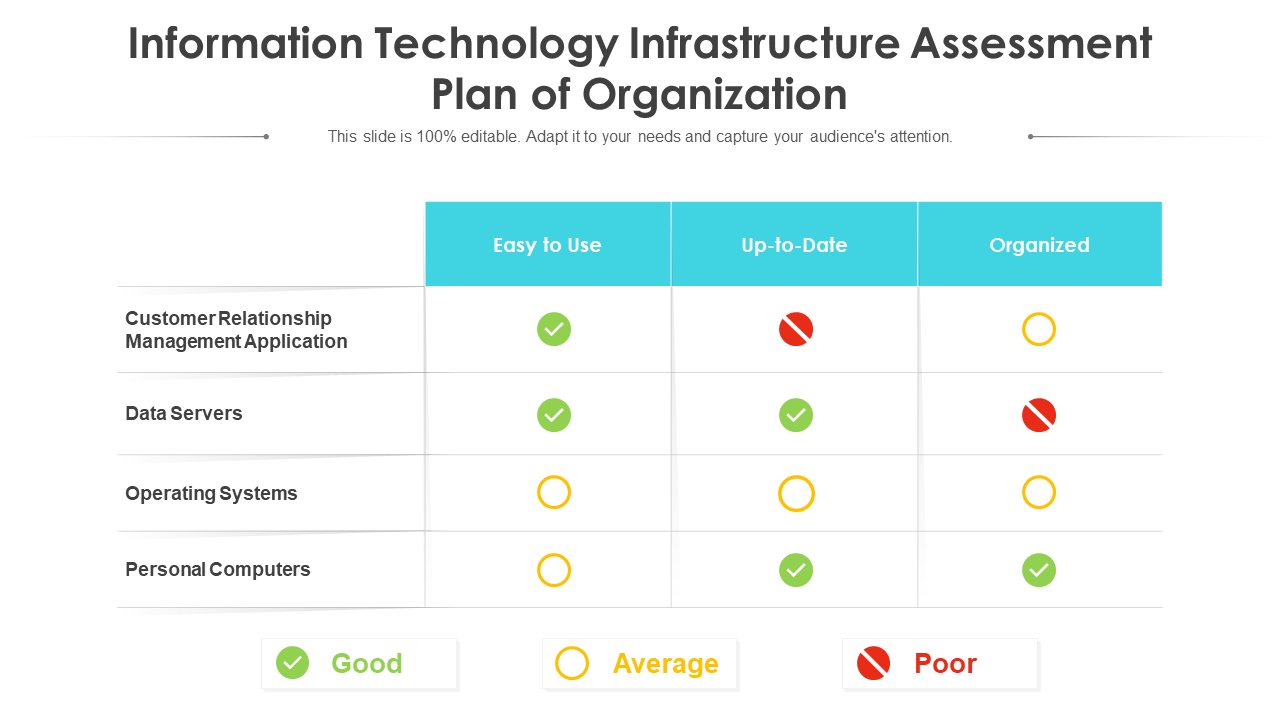

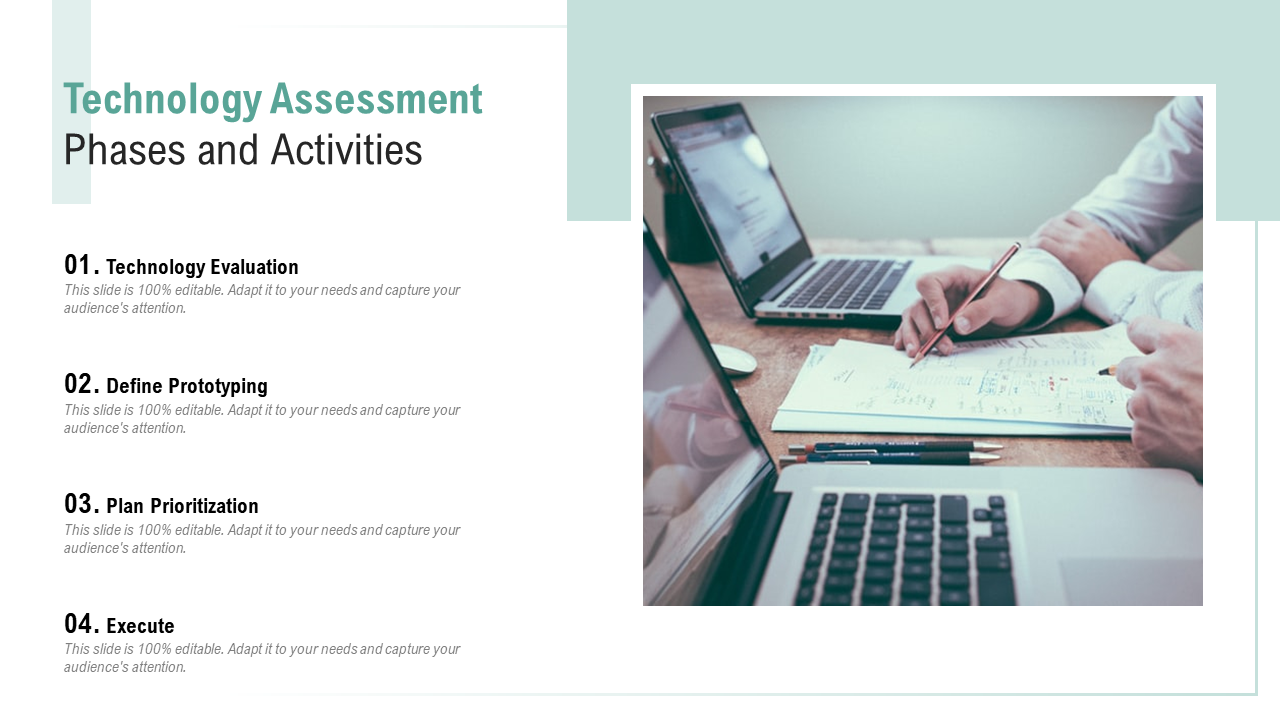
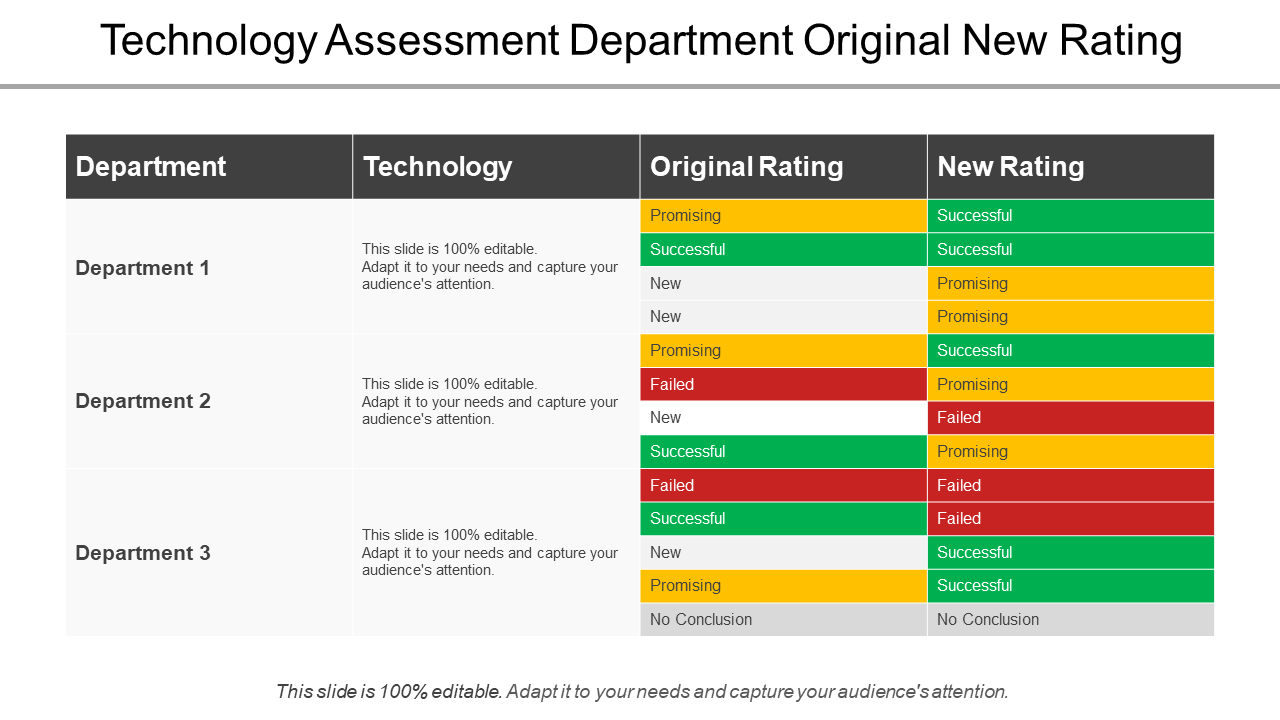



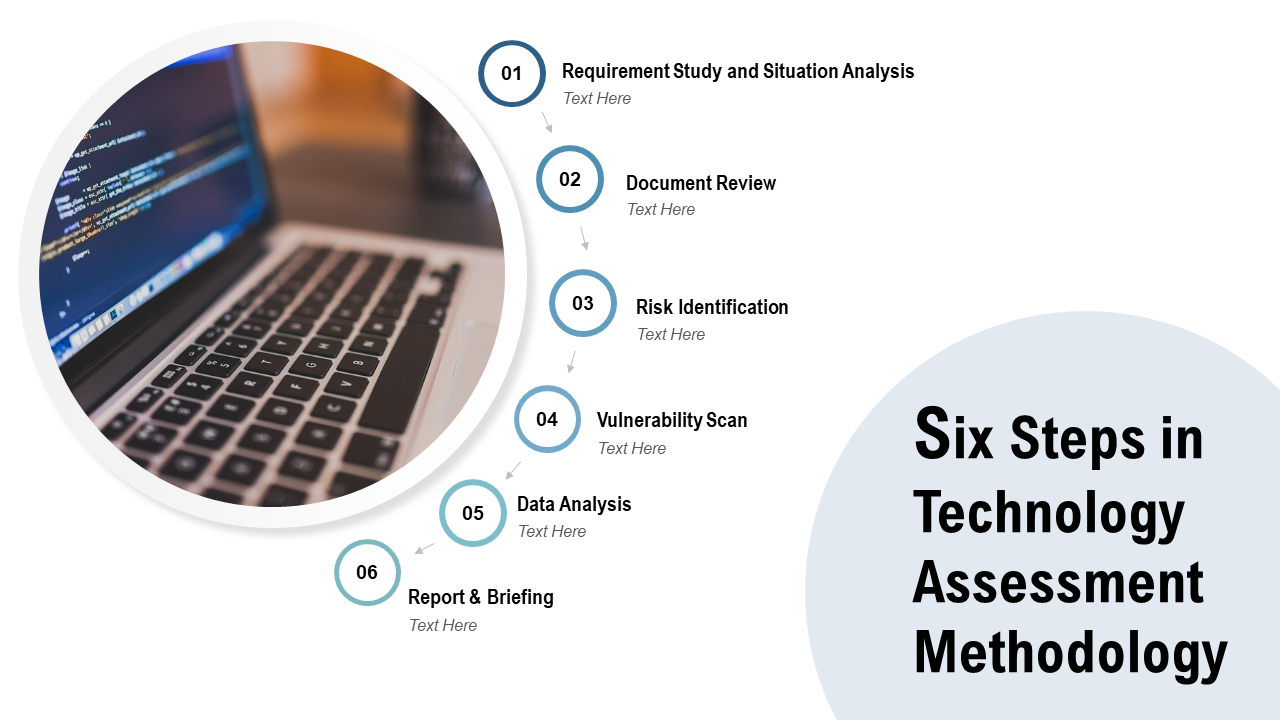




![[Updated 2023] Top 10 Readiness Assessment Templates To Improve Business Outcomes](https://www.slideteam.net/wp/wp-content/uploads/2021/08/Banner_design_77b-1013x441.png)
![[Updated 2023] Why Current State Assessment Matters for Your Organization (Best PPT Templates Included)](https://www.slideteam.net/wp/wp-content/uploads/2021/12/1013x441no-button-3-1-1013x441.jpg)




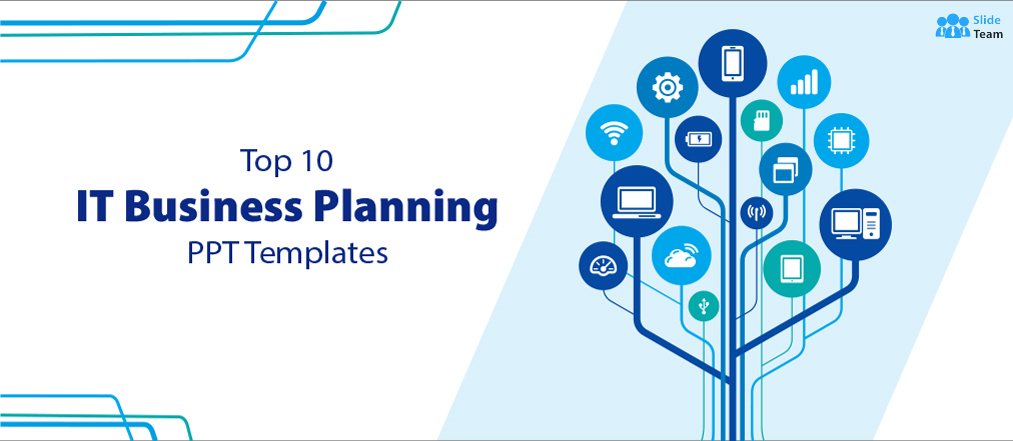
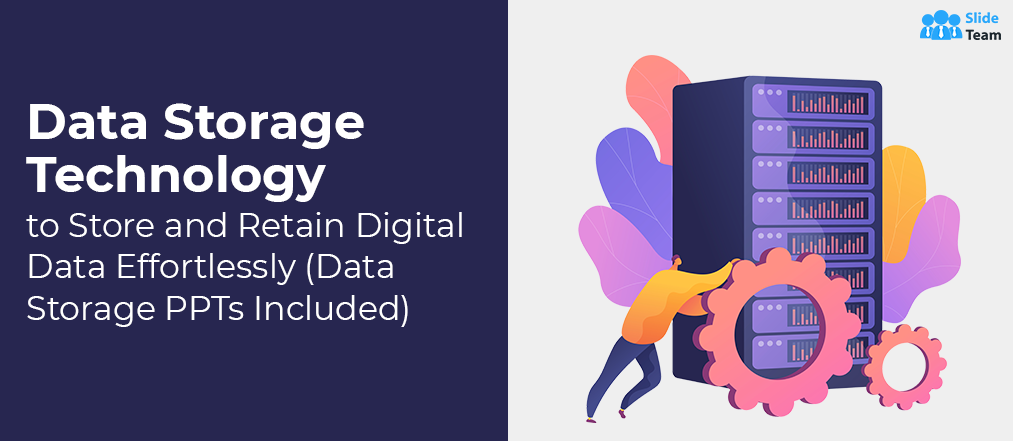
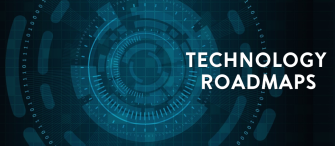
![Top 10 Technology Stack Templates to Scale Your Business Applications [Free PDF Attached]](https://www.slideteam.net/wp/wp-content/uploads/2022/01/1013x441no-button-2-1013x441.jpg)


